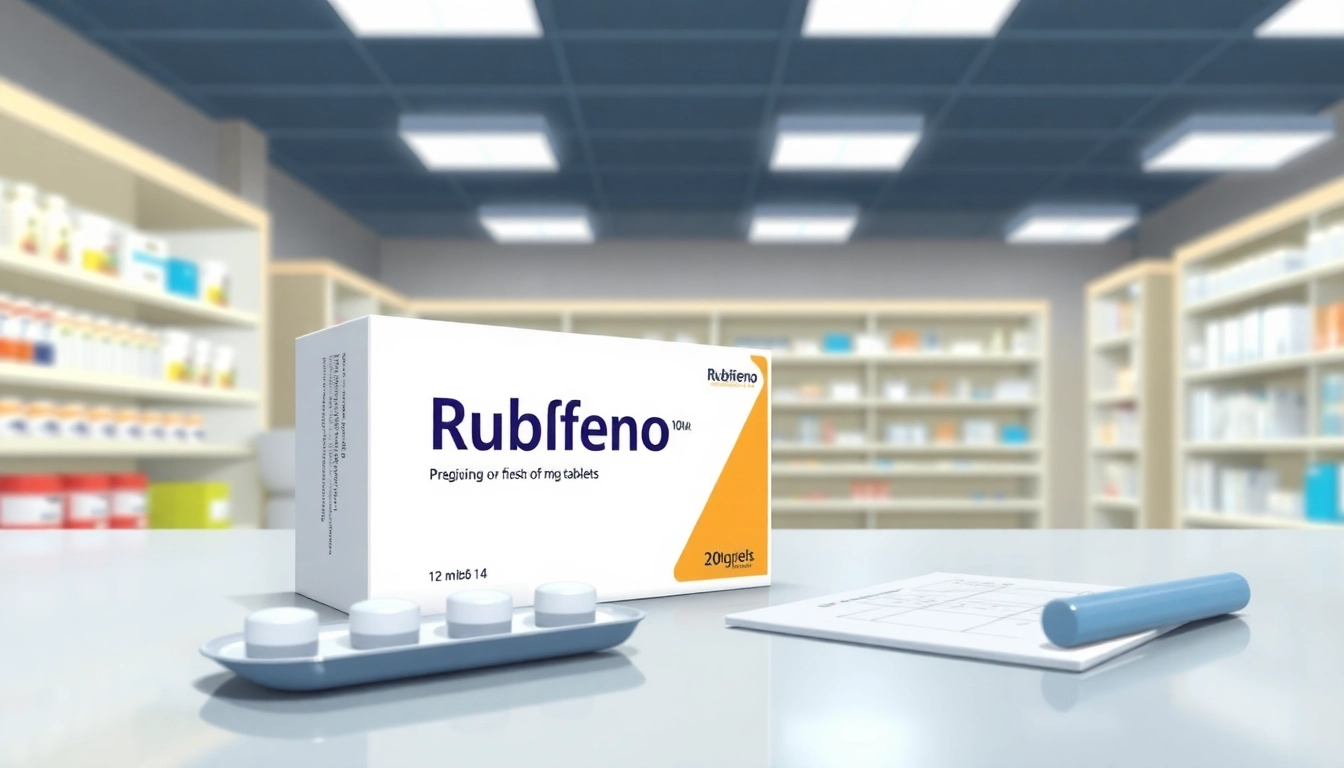What is Rubifeno 10 mg?
Overview of Rubifeno and Its Uses
Rubifeno 10 mg is a pharmaceutical product primarily used for the treatment of Attention Deficit Hyperactivity Disorder (ADHD) and narcolepsy. This medication is known for its active ingredient, methylphenidate, a central nervous system stimulant that aids individuals in improving focus, attention, and self-control, especially those suffering from ADHD. In addition to ADHD, Rubifeno also addresses symptoms associated with narcolepsy, a condition characterized by excessive daytime sleepiness and sudden sleep attacks. You can explore more about the uses and effects of Rubifeno 10 mg on specialized health resources.
Chemical Composition and Mechanism
Rubifeno contains methylphenidate hydrochloride as its active component. Methylphenidate functions by inhibiting the reuptake of dopamine and norepinephrine, neurotransmitters that play crucial roles in regulating attention and behavior. The inhibition increases the levels of these neurotransmitters in the brain, enhancing the ability to focus and maintain concentration. The formulation of Rubifeno allows for a quick release of the active ingredient, making it effective in short-time intervals, which is especially beneficial during school hours or work periods.
Common Conditions Treated with Rubifeno
While primarily prescribed for ADHD, Rubifeno is also employed in the management of narcolepsy. ADHD affects approximately 5% of children worldwide, manifesting as inattention, hyperactivity, and impulsivity. For many, these symptoms can lead to difficulties in academic and social settings. Narcolepsy, though less common, affects around 0.02% of the population and can severely disrupt daily life. Rubifeno aids in mitigating these conditions, allowing individuals to lead more productive lives.
How Rubifeno 10 mg Works
Mechanism of Action in the Brain
The mechanism of action of Rubifeno is based on its effects on specific neurotransmitters in the brain. By increasing the concentration of dopamine and norepinephrine, Rubifeno enhances synaptic communication, which is crucial for normal cognitive function. This increase helps improve attention spans and the overall ability to concentrate, which is particularly beneficial in ADHD treatment. Clinical studies have shown that patients taking methylphenidate report significant improvements in their ability to focus and complete tasks compared to those receiving a placebo.
Dosing and Administration Guidelines
Rubifeno is typically administered in tablet form, with a common starting dose of 10 mg per day. The dosage may be adjusted based on individual response, with some patients requiring lower or higher doses. It is critical for patients to follow their healthcare provider’s recommendations regarding dosage and administration to achieve optimal results. Typically, Rubifeno is taken in the morning to coincide with daily activity, minimizing sleep disturbances.
Potential Effects on ADHD and Narcolepsy
The potential effects of Rubifeno on individuals with ADHD include improved concentration, reduced impulsivity, and enhanced task completion rates. Children and adults alike may experience a substantial improvement in their ability to engage in learning and work-related activities. For those suffering from narcolepsy, Rubifeno can help maintain alertness during waking hours, enabling them to manage daytime sleepiness effectively. Ultimately, the medication plays a significant role in promoting overall functional improvement for individuals battling these conditions.
Side Effects and Safety Information
Common Side Effects of Rubifeno 10 mg
Like all medications, Rubifeno may cause side effects. Commonly reported side effects include insomnia, decreased appetite, stomach ache, and nervousness. These symptoms often manifest during the initial usage phase as the body adjusts to the medication. It is crucial for patients to monitor their responses and communicate with their healthcare providers, as some side effects may require dose adjustments or alternative treatment strategies.
Serious Reactions: When to Seek Help
Though most individuals tolerate Rubifeno well, serious side effects can occur. These include symptoms of heart complications, such as palpitations, unusual changes in blood pressure, or chest pain. Mental health concerns, such as increased anxiety, agitation, or depression, may also arise. If any severe reactions occur, healthcare providers should be contacted immediately, as prompt intervention can prevent potential complications.
Interactions with Other Medications
Rubifeno may interact with various medications, possibly increasing the risk of adverse effects or reducing drug efficacy. Notably, interactions may occur with blood pressure medications, anticoagulants, and other stimulants. Patients should provide their healthcare providers with a complete list of all medications, supplements, and over-the-counter products they are taking to avoid dangerous interactions.
Dosage and Usage Recommendations
Recommended Dosage for Different Age Groups
The recommended dosage of Rubifeno may differ based on the age and clinical condition of the patient. For children, starting doses typically range from 5 mg to 10 mg daily, with adjustments made depending on response and tolerance levels. For adults, dosages can be increased to 20 mg or even higher if necessary, with the maximum daily dosage generally capped at 60 mg for those with ADHD. It’s essential to follow healthcare professional guidance closely during the dosage adjustment process.
Adjustments Based on Patient Conditions
Patients with certain medical conditions, such as cardiovascular disorders or a history of substance abuse, may require customized dosing regimens. Additionally, adjustments may be necessary when transitioning from another stimulant medication to Rubifeno to avoid withdrawal symptoms. Regular follow-up appointments with healthcare providers will ensure that any potential complications or necessary adjustments are managed effectively.
Best Practices for Taking Rubifeno 10 mg
To maximize the benefits of Rubifeno, patients should adhere to several best practices: take the medication at the same time each day to maintain consistent drug levels in the body, avoid taking it late in the day to prevent insomnia, and maintain a balanced diet to offset any appetite suppression that may occur. Engaging with support networks and therapy while taking Rubifeno can also enhance treatment outcomes for ADHD and narcolepsy.
Frequently Asked Questions About Rubifeno 10 mg
What Should I Know Before Taking Rubifeno?
Before starting Rubifeno, patients should inform their healthcare providers of their complete medical history, particularly regarding any pre-existing health conditions, allergic reactions, or current medication regimens. Understanding potential side effects and the importance of managing any adverse reactions is crucial, as is recognizing the impact of Rubifeno on behavior and mood.
How Long Do the Effects of Rubifeno Last?
The effects of Rubifeno typically last around 4 to 6 hours, depending on the individual’s metabolism and dosage. For patients who require prolonged effects, healthcare providers may recommend extended-release formulations or additional doses throughout the day as needed to sustain therapeutic benefits without interruption.
Is Rubifeno a Generic for Ritalin?
Yes, Rubifeno is a brand name for methylphenidate, which is also found in Ritalin and other similar medications. While they contain the same active ingredient, the formulations and release mechanisms may differ, which can affect how quickly and effectively each medication works for the individual. Users should consult with their healthcare providers to determine which option is best suited to their treatment needs.



